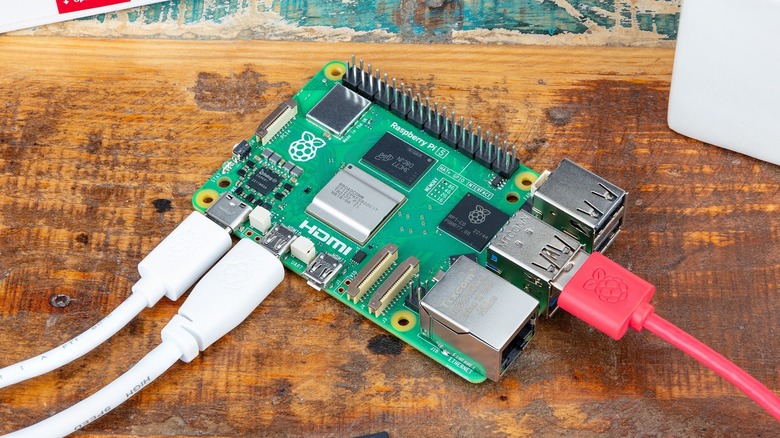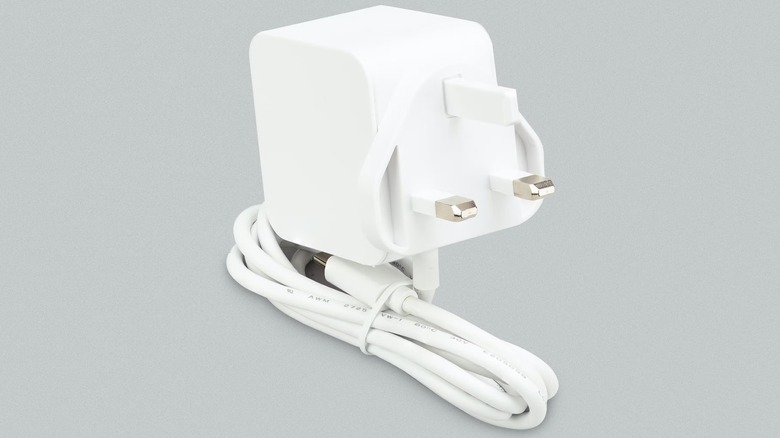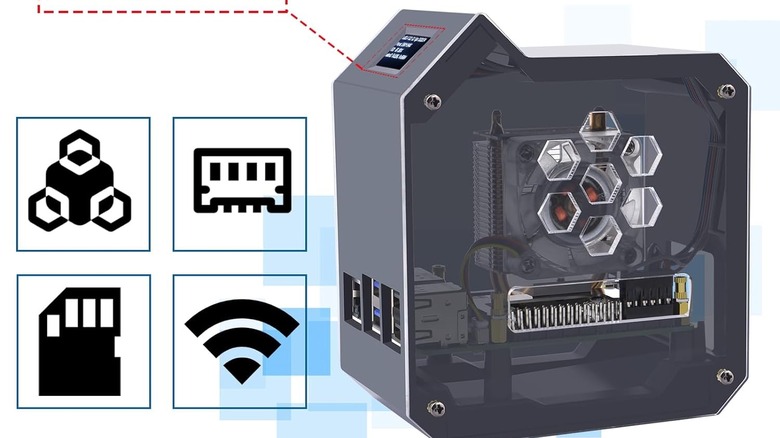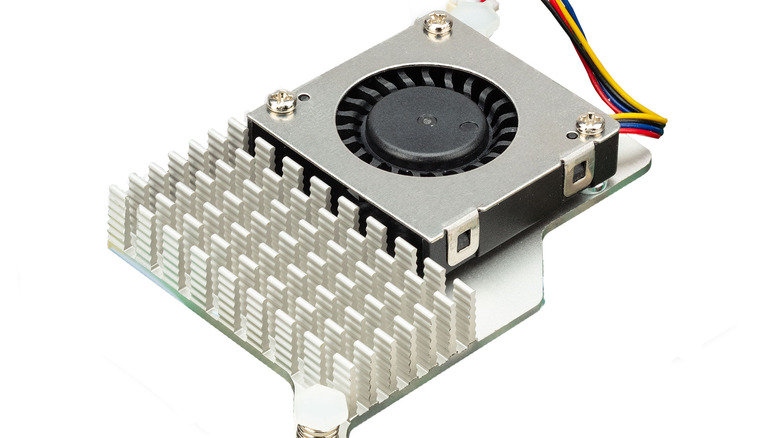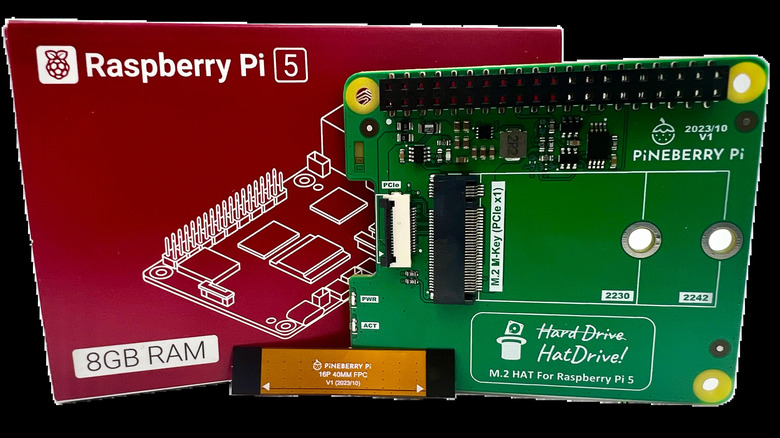Essential Raspberry Pi 5 Accessories For Your Next Project
We may receive a commission on purchases made from links.
On its own, the Raspberry Pi 5 is a powerful piece of kit. It's twice as fast as its predecessor, the Raspberry Pi 4, and comes in two varieties. You can opt for 4GB of RAM or 8GB if you need a bit of extra multitasking ability. The speed boost is even more impressive when you consider the Pi's processor is the first Raspberry Pi has actually designed itself. Connectivity has also received a bit of a boost with this latest generation of Pi.
The Pi 5 launched back in October of 2023, just over four years after the Pi 4 hit the market. Its MSRP is $40 for the 4GB version, and $80 for the 8GB model. However, its a Pi, so demand is very high. As a result, you can expect to pay a premium on both models of the micro computer, with some outlets even selling their Pis for close to twice the MSRP. While affordability is one of the Pi's main selling points, it's been difficult to find one at the price Raspberry Pi intended for several years now. Still, if you don't mind splashing the cash you can also purchase a few key accessories to go along with your new Pi. These are some of the best to consider.
Give it a power boost
The Raspberry Pi 5 can be powered in a few ways. If plugging it in is proving difficult, you can buy accessories to allow you to power the Pi 5 with an ethernet cable. This is particularly handy if your Pi is in a spot where a power cable would be hard to run, but an ethernet connection is readily available. However, if you want to get the most out of your Pi, dedicated and specialized power is the best way to do things. As the device can be powered via USB-C, any block capable of supplying 5V/3A of power will be enough to make it work and this includes a Pi 4 power cable. However, the device itself has a peak power consumption of 12 Watts, and plugging in accessories like solid state drives will increase power demands.
The official Raspberry Pi 5 power supply has a 27 Watt output, which is more than enough to meet the little PC's needs. It should also be capable of supplying steady power, even if you have a bunch of accessories plugged into your Pi. With an MSRP of $10, it's a sensible investment if you're planning to push your Pi 5 to its limits. Third-party power supplies are also available, but many of them are two or three times the official unit's price.
A case keeps the Pi 5 safe
Like its predecessors, the Pi 5 has near infinite application possibilities. Some of those involve installing it inside something like a smart mirror, or a similar object — in which case the board itself will be well protected. However, other applications will leave the Pi 5 exposed, so you should look into investing in something that will keep it safe. Enter the Pi 5 case, which is something you may be aware of if you have previous Pi experience. Other products in the line also had their share of cases.
On a basic level, a Pi case will be a plastic box the little PC can fit inside. This type of case is often very cheap, but will give the board a small amount of protection against damage, splashes, and bits of debris that could cause a short. Then you have more expensive cases. These will provide better protection, and some come with nifty features like built-in cooling systems. Size is also a consideration, especially given the Pi's small profile being one of its main features. But if you don't really care about keeping things compact, you can go with something that makes the microcomputer look like a little gaming desktop.
Keep things cool
The Raspberry Pi 5 is a lot more powerful than its predecessor, but that performance doesn't come without consequences. The Pi 5 runs noticeably hotter than the 4 and other previous Pi incarnations. The excessive heat isn't a life or death problem, the board is unlikely to burn out, combust, or shut itself off due to overheating under normal use — but heat still isn't desirable. Excess heat will ultimately shorten the lifespan of electrical devices, and the Raspberry Pi 5 isn't an exception to this rule. The heat also takes away from the device's portability somewhat, as picking up hot objects tends to be unpleasant.
Luckily, there's a cheap and easy solution to this problem. You can pick up a cooler for the Pi 5, and it will only set you back about $5. The cooler itself is comprised of a heatsink and a small fan, which doesn't seem like much but is more than enough to keep the microcomputer at a tolerable temperature.
Add a camera
While the Pi 5 can be turned into numerous things, it's basically a compact PC at its core. So you could buy one and use it as a smaller replacement for a laptop or desktop should you want to. However, a lot of functionality has to be added via accessories, and this includes things like cameras. You can just buy any old webcam and connect it via the USB C or A ports on the Pi 5
If photography is more your bag, you can buy an official 12.7-megapixel camera module, which will give you a similar experience to the one people have with camera phones. The module uses a Sony IMX477 sensor with a back-illuminated architecture. Two choices of mount are also available. Several specialized lenses are also up for grabs, with adjustable back focus. So while your phone may be packing something with a few more megapixels, long range photography may actually look better on the Pi 5.
Solid state storage is available
You've been able to attach external solid state drives to Raspberry Pi's products for a while, but soon you'll have the option to build a bit of solid state memory directly into the device. Third party M.2 HATs are already on the market and allow you to connect an M.2 drive to the Pi 5. The HATs take advantage of the Pi 5's new PCIe connector and can sit right on top of the board.
There are several M.2 HATs to choose from. If Amazon makes life easier for you, options are available there. If you're worried about a third party producer's reputation then Pineberry Pi released the original M.2 HAT for the Pi 5 — and that module has been well received. Pineberry Pi currently offers two options, one of which fits to the top of device while the other attaches to the bottom.
The modules themselves tend to be inexpensive, though M.2 storage is still one of the pricier options on the market. If you're fond of building your own PCs, then it may be worth chucking an old M.2 into a Pi next time you upgrade your main rig. Beyond that, there are occasionally sales on sites like Amazon and Newegg, but this is by no means a cheap way to add memory to the Pi 5.
